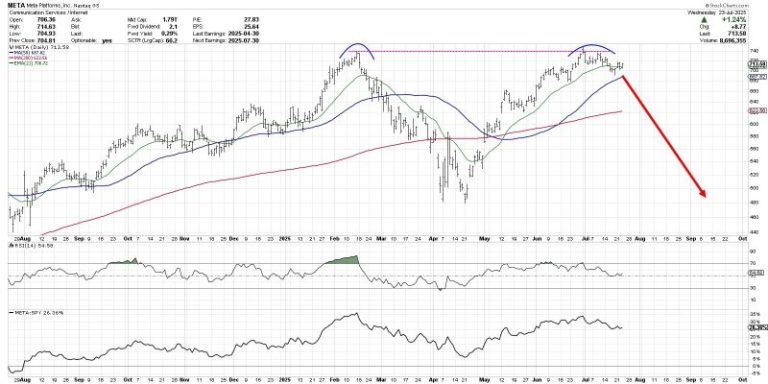Walker Lane Resources Ltd. (TSX – V: WLR) (F r ankfurt:6YL ) (‘WLR’ o r t h e ‘ Comp a ny’) is pleased to announce, further to its news releases of June 10, 2025, that it has received TSX Venture Exchange approval to close the non-brokered private placement (the ‘ Private Placement ‘). On July 23, 2025, the Company issued 2,508,335 non-flow through Units (each a ‘ NFT Unit ‘) at a price of $0.12 per NFT Unit, for gross proceeds of $301,000, and 607,143 flow-through Units (each a ‘ FT Unit ‘) at a price of $0.14 per FT Unit, for gross proceeds of $85,000, for aggregate gross proceeds of $386,000. Each NFT Unit is composed of one common share and one common share purchase warrant (each whole warrant, a ‘ NFT Warrant ‘). Each FT Unit is composed of one common share and one common share purchase warrant (each whole warrant, a ‘ FT Warrant ‘), each NFT Warrant and each FT Warrant are exercisable for two (2) years at $0.16 per common share.
An insider of the Company subscribed for an aggregate of 1,178,571 Units, composed of 750,000 NFT Units and 428,571 FT Units. Such participation was considered to be a ‘related party transaction’ as this term is defined in Multilateral Instrument 61-101 – Protection of Minority Securityholders in Special Transactions (‘ MI 61-101 ‘). The Company relied on the exemption from valuation requirement and minority approval pursuant to subsection 5.5(a) and 5.7(a) of MI 61-101, respectively, for the insider participation in the Offering, as the securities do not represent more than 25% of the Company’s market capitalization, as determined in accordance with MI 61-101.
The Company intends to use the proceeds from the sale of FT Units to incur ‘Canadian exploration expenses’ and ‘flow through mining expenditures’ as these terms are defined in the Income Tax Act (Canada) and, in particular, the Company’s exploration program at its Amy and Silver Hart Properties in the Rancheria Silver District, (Yukon/British Columbia), and potentially limited activities at Logjam (Yukon). Such proceeds will be renounced to the subscribers with an effective date not later than December 31, 2025, in the aggregate amount of not less than the total amount of gross proceeds raised from the issue of FT Units. The Company intends to use the net proceeds from the sale of NFT units for its properties in Nevada including Tule Canyon, Cambridge and Silver Mountain and for general working capital. The FT and NFT Units issued under the financing are subject to a four-month hold.
A bout Walker Lane Resources Ltd.
Walker Lane Resources Ltd. is a growth-stage exploration company focused on the exploration of high-grade gold, silver and polymetallic deposits in the Walker Lane Gold Trend District in Nevada and the Rancheria Silver District in Yukon/B.C. and other property assets in Yukon. The Company intends to initiate exploration programs to advance the drill-ready Tule Canyon (Walker Lane, Nevada) and Amy (Rancheria Silver, B.C.) projects to resource definition stage through proposed drilling campaigns that the Company desires to undertake in the near future.
The company intends to conduct early stage exploration efforts on its Cambridge and Silver Mountain Properties in the Walker Lane Area, Nevada, evaluate its Silver Hart/Blue Heaven property for medium term development, and advancing exploration on its Logjam property in Yukon.
On behalf of the Board:
‘Kevin Brewer’
Kevin Brewer, President, CEO and Director
Walker Lane Resources Ltd.
For Further Information and Investor Inquiries:
Kevin Brewer, P. Geo., MBA, B.Sc. (Hons), Dip. Mine Eng.
President, CEO and Director
Tel: (709) 327 8013
kbrewer80@hotmail.com
Telephone (604) 602-0001
www.walkerlaneresources.com
Suite 1600-409 Granville St.,
Vancouver, BC, V6C 1T2
Ne i t h er t h e TS X Ven t ure Exc h a n ge n o r its Reg u l a ti o n S ervices Prov i der (as t h at term is de fi ned in t h e p o li c ies of the T SX Vent u re Excha n ge) accepts re s ponsi b ility f or t he ade q u acy or accuracy of this release.
Cautionary and Forward-Looking Statements
This press release and related figures, contain certain forward-looking information and forward-looking statements as defined in applicable securities laws (collectively referred to as forward-looking statements). These statements relate to future events or our future performance. All statements other than statements of historical fact are forward-looking statements. The use of any of the words ‘anticipate’, ‘plans’, ‘continue’, ‘estimate’, ‘expect’, ‘may’, ‘will’, ‘project’, ‘predict’, ‘potential’, ‘should’, ‘believe’ ‘targeted’, ‘can’, ‘anticipates’, ‘intends’, ‘likely’, ‘should’, ‘could’ or grammatical variations thereof and similar expressions is intended to identify forward-looking statements. These statements involve known and unknown risks, uncertainties and other factors that may cause actual results or events to differ materially from those anticipated in such forward-looking statements. These statements speak only as of the date of this presentation. These forward-looking statements include, but are not limited to, statements concerning: our strategy and priorities including certain statements included in this presentation are forward-looking statements within the meaning of Canadian securities laws, including statements regarding the Tule Canyon, Cambridge, Silver Mountain, and Shamrock Properties in Nevada (USA), and its Silverknife and Amy properties in British Columbia, the Silver Hart, Blue Heaven and Logjam properties in Yukon all of which now comprise the mineral property assets of WLR. WLR has assumed other assets of CMC Metals Ltd. including common share holdings of North Bay Resources Inc. and all conditions and agreements pertaining to the sale of the Bishop mill gold processing facility and remains subject to the condition of the option of the Silverknife Property with Coeur Silvertip Holdings Ltd. These forward-looking statements reflect the Company’s current beliefs and are based on information currently available to the Company and assumptions the Company believes are reasonable. The Company has made various assumptions, including, among others, that: the historical information related to the Company’s properties is reliable; the Company’s operations are not disrupted or delayed by unusual geological or technical problems; the Company has the ability to explore the Company’s properties; the Company will be able to raise any necessary additional capital on reasonable terms to execute its business plan; the Company’s current corporate activities will proceed as expected; general business and economic conditions will not change in a material adverse manner; and budgeted costs and expenditures are and will continue to be accurate. Actual results and developments may differ materially from results and developments discussed in the forward looking statements as they are subject to a number of significant risks and uncertainties, including: public health threats; fluctuations in metals prices, price of consumed commodities and currency markets; future profitability of mining operations; access to personnel; results of exploration and development activities, accuracy of technical information; risks related to ownership of properties; risks related to mining operations; risks related to mineral resource figures being estimates based on interpretations and assumptions which may result in less mineral production under actual conditions than is currently anticipated; the interpretation of drilling results and other geological data; receipt, maintenance and security of permits and mineral property titles; environmental and other regulatory risks; changes in operating expenses; changes in general market and industry conditions; changes in legal or regulatory requirements; other risk factors set out in this presentation; and other risk factors set out in the Company’s public disclosure documents. Although the Company has attempted to identify significant risks and uncertainties that could cause actual results to differ materially, there may be other risks that cause results not to be as anticipated, estimated or intended. Certain of these risks and uncertainties are beyond the Company’s control. Consequently, all of the forward-looking statements are qualified by these cautionary statements, and there can be no assurances that the actual results or developments will be realized or, even if substantially realized, that they will have the expected consequences or benefits to, or effect on, the Company. The information contained in this presentation is derived from management of the Company and otherwise from publicly available information and does not purport to contain all of the information that an investor may desire to have in evaluating the Company. The information has not been independently verified, may prove to be imprecise, and is subject to material updating, revision and further amendment. While management is not aware of any misstatements regarding any industry data presented herein, no representation or warranty, express or implied, is made or given by or on behalf of the Company as to the accuracy, completeness or fairness of the information or opinions contained in this presentation and no responsibility or liability is accepted by any person for such information or opinions. The forward-looking statements and information in this presentation speak only as of the date of this presentation and the Company assumes no obligation to update or revise such information to reflect new events or circumstances, except as may be required by applicable law. Although the Company believes that the expectations reflected in the forward-looking statements and information are reasonable, there can be no assurance that such expectations will prove to be correct. Because of the risks, uncertainties and assumptions contained herein, prospective investors should not read forward-looking information as guarantees of future performance or results and should not place undue reliance on forward looking information. Nothing in this presentation is, or should be relied upon as, a promise or representation as to the future. To the extent any forward-looking statement in this presentation constitutes ‘future-oriented financial information’ or ‘financial outlooks’ within the meaning of applicable Canadian securities laws, such information is being provided to demonstrate the anticipated market penetration and the reader is cautioned that this information may not be appropriate for any other purpose and the reader should not place undue reliance on such future-oriented financial information and financial outlooks. Future-oriented financial information and financial outlooks, as with forward-looking statements generally, are, without limitation, based on the assumptions and subject to the risks set out above. The Company’s actual financial position and results of operations may differ materially from management’s current expectations and, as a result, the Company’s revenue and expenses. The Company’s financial projections were not prepared with a view toward compliance with published guidelines of International Financial Reporting Standards and have not been examined, reviewed or compiled by the Company’s accountants or auditors. The Company’s financial projections represent management’s estimates as of the dates indicated thereon.










